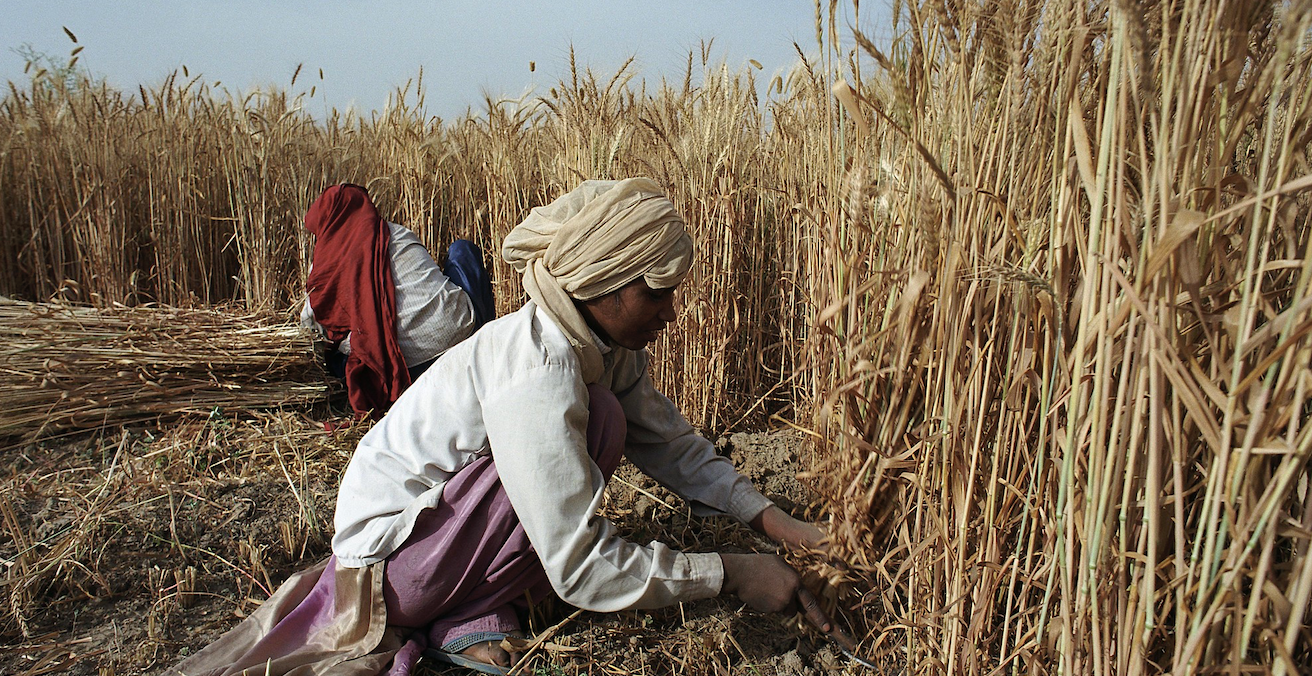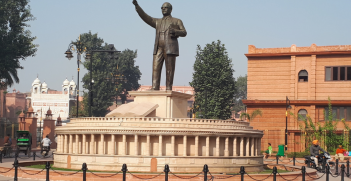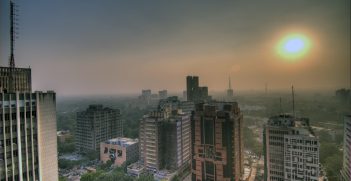Indian Elections: It’s All About the Economy, Stupid!

Voting is now underway in the world’s largest democracy. With many of India’s rural farmers affected by the government’s mismanagement of the economy and the agricultural sector, their votes could be a decisive factor in determining the outcome of the elections.
On April 11, India’s 900 million eligible citizens commenced voting in the world’s largest democratic exercise. Polling will continue across the vast country until the 19 May and the counting of votes will commence on 23 May. The incumbent Prime Minister Narendra Modi and his Bhartiya Janata Party (BJP) are currently the favourites running against Rahul Gandhi and the Indian National Congress (INC), the country’s oldest political party. The election campaign has seen Prime Minister Modi focussing his narrative solely on the patriotic and often communal ideology of Hindutva (hegemony of the Hindu religion), which stands in stark contrast to his 2014 polling platform of economic development. Arguably, the 2019 election results will be highly influenced by voters’ dissatisfaction with the poor outcomes from the Modi government’s economic policies, most visible in the agricultural sector of the country.
The agricultural slowdown seen under the Modi administration will play an important role in determining votes at the ballot box. Although the farming sector, which employs roughly half of the 1.3 billion people in India, has been in structural crisis for the past thirty years, when the Modi government came into power it inherited a favourable set of circumstances in the agriculture sector. Agricultural output in the preceding years under the INC-led United Progressive Alliance (UPA) government had been at a relative high due to elevated minimum support prices (MSP) – this is the price at which government purchases crops from farmers – and a more buoyant economy in the ten years of UPA rule from 2004 to 2014.
Since Modi took office in 2014, there has been growing rural distress which has now turned into rural dissent. This could pose a significant political challenge for the incumbent BJP government. In the four years since the Modi government took office, the average growth rate of the agricultural sector has fallen to 2.4 percent, down from 4.3 percent in the preceding four years. Admittedly, not all factors causing the downturn are due to the incumbent government’s policy failures.
The three main factors contributing to the decline in the agriculture sector were the consecutive nationwide droughts between 2014 and 2016, the effects of the government’s demonetization policy on the farmers and the falling global prices for agricultural commodities. The droughts were caused by the El Niño weather pattern in the Pacific Ocean. However, the government was accused of a “lackadaisical response” to these droughts as its actions were limited to a routine increase in compensation. Despite repeated pressure from the Supreme Court, it did not take any proactive steps in either declaring a drought or making improvements in delivering rations. The deflation of agricultural commodity prices was triggered by a large fall in global oil prices and was largely beyond the control of a national government. However, the demonetization policy implemented in November 2016, that made 86 percent of the existing currency (₹500 and ₹1000 notes) illegal tender, severely impacted the cash-based agricultural sector. While the Modi government maintained that the demonetization policy was successfully implemented and necessary to curb “black money,” reports suggest farmers were amongst the worst affected by poor execution of this policy. It was implemented between the cropping seasons when the farmers were either selling their kharif (autumn) yield or sowing their rabi (winter) crops. This rendered them cashless at a crucial time, when they were also still recovering from consecutive droughts.
An accumulation of these factors sparked agitation and protests across the then BJP-controlled states of Rajasthan, Maharashtra and Madhya Pradesh, where farmers marched outside of parliaments. This prompted the government into action. Prime Minister Modi promised to double farmers’ incomes by 2022 in an attempt to appease the agricultural sector. However, a report provided by NITI Aayog, a government think tank, states that farmers’ real incomes will have to grow at an exceptional rate of 10.4 percent annually between 2015 and 2022 (more than three times its growth rate of 3.4 percent between 1993 and 2016) in order for them to be doubled by 2022. This seems quite unrealistic given their historic rate of growth.
There are also further unfulfilled economic promises made by the Modi government in its 2014 manifesto that will likely impact its performance in the elections. Chief among these is India’s current unemployment crisis: the unemployment rate is now 6.1 percent, its highest level in 45 years. The opposition has claimed this to be a “national disaster.” In addition, what benefits there are from India’s economic growth are unevenly dispersed amongst the population. There are not enough jobs being created for the number of young people entering the workforce: 18.7 percent of urban males aged 15-29 and 27.2 percent of urban females in the same age group are without work. And India has an unrivalled youth demographic that may play a decisive role in the election. Sixty-five percent of India’s population is under the age of 35 and there will be 150 million young people who will be eligible to vote for the first time. Meanwhile, Modi’s ambitious “Make in India” initiative – which was aimed at creating more manufacturing jobs for the 1.2 million youth entering the job market and to make India a global manufacturing hub – has also failed to take off.
Prime Minister Modi has focused his 2019 election campaign on a Hindu nationalist agenda and the re-branding of himself from a chaiwala (tea-seller) to a chowkidaar (watchman). And all the while, carefully avoiding the issue of his government’s economic mismanagement in his speeches and rallies. It is possible that due to weak opposition and lack of a clear alternative, Modi and the BJP will repeat their 2014 winning performance. However, the distress of the largest sector of the Indian economy cannot be ignored. In the 2018 state elections for Madhya Pradesh, Rajasthan and Chattisgarh, states with high numbers of distressed farmers, voters have already displayed their dissatisfaction with Modi and the BJP by voting for the opposition INC. It will not be surprising if similar results are seen at the national level in May.
Teesta Prakash is a PhD candidate at the School of Government and International Relations at Griffith University where her research interests include Australian and Indian foreign policy. She has previously completed a Master of International Relations at the Australian National University in Canberra.
This article is published under a Creative Commons License and may be republished with attribution.





